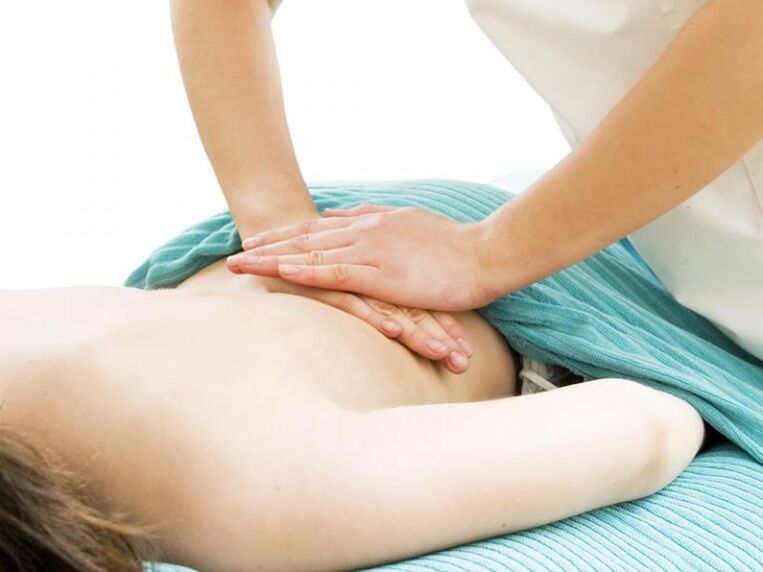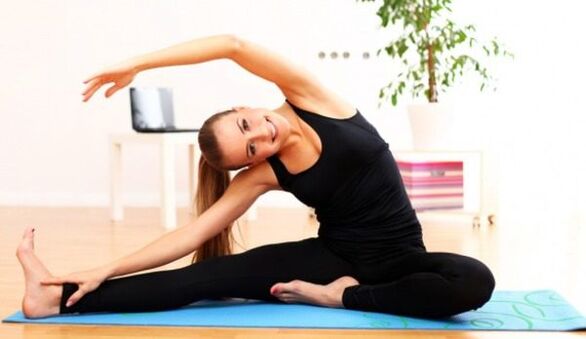Osteochondrosis of the lumbar region is a common disease.This is a consequence of the degenerative process in which the intervertebral disc suffers: tissue nutrition worsens, the disc is thinner, hardens and does not perform the shock absorption function.Consequently, the distance between the vertebrae decreases and the ending of the spinal cord and the nerve are pinched, pain dysfunction occurs.
The intervertebral disc is an anatomical disk formation that provides mobility and elasticity of the spine.The disc consists of a octopus nucleus surrounded by a fibrous ring.The octopus core absorbs quickly and gives water, which is important for maintaining intra -disregard pressure.All the degenerative diseases of the spine of the spine, which include osteochondrosis, begin with the gradual dehydration of the octopus nucleus.
Causes of lumbar osteochondosis
Lumbar osteochondosis develops following a series of reasons:
- High regular load on the lower back of the back.At risk, athletes and people who are forced to raise weights at work.
- A sedentary lifestyle.Without moderate physical activity, muscle corset is weakened, blood circulation worsens and metabolic processes in the spine slows down.
- Excess weight.The consequences of overweight: an increase in pressure on the spinal column, premature wear of the intervertebral discs.
- Moster Disorders.With a curved back or an excessive deflection in the lower back, the back muscles are weak or vice versa, thesis.The load on the spine is distributed in a non -uniform way.
- Trauma and spine of microtrauma.They can cause sports, especially without adequate preparation, lifting of incorrect weights, bruises, falls, etc.
When lifting weights, it is necessary to observe the following procedure:
- Squat, right;
- Take the load as close as possible to the body;
- When it gets up first of all, you need to strain your leg muscles (feet, hips);
- then filter the print;
- Finally, the muscles of the hands begin to work.
- Age.The despotic changes in the spine are part of the aging process, but now such a diagnosis is increasingly made on faces of 25-30 years and even adolescents.
- Inheritance.Violations in the development of the musculoskeletal frame and the weak structure of the intervertebral discs can be genetically predetermined.
- Inflammatory diseases of the spine.The infections and diseases that cause inflammation of the joints of the spine, the changes in its structure and form can cause the development of the osteocondrosis.
Other causes that cause lumbar osteochondrosis:
- congenital or acquired violations in the skeleton structure;
- frequent hypothermia;
- high level of stress;
- improper nutrition;
- violation of the regime of the day;
- uncomfortable laying for a long time;
- bankruptcy in the endocrine system;
- diseases of other organs;
- Bad ecology.
Phase of osteochondosis of the lumbar
The lumbar column osteochondrosis develops gradually, crossing four phases.
The 1st stage is the beginning of the degenerative process in the spine.The rare stupid pain in the lower back, which is particularly manifested when embarrassing weights or movements are characteristic.
In the second phase, the fibrous ring of the disc is destroyed and the vertebrae are brought together, the nerve terminations of the spinal cord are compressed.The pain becomes hard, it also occurs with the normal walk.
In the third phase, fibrous rings are finally destroyed, intervertebral hernias appear.Intensive pain is constantly felt, regardless of the load and nature of the movements.
In the fourth phase, the cartilage is atrophized and the bone tissue of the vertebrae in the lumbar region grows, thus adapting to pain.The lumbar region loses flexibility, it is difficult for the patient to move, disability can occur.
Symptoms of lumbar osteochondosis
Lumbar osteochondrosis develops slowly, in the early stages its symptoms are weakly expressed, rarely manifested and only after an excessive or atypical load.Therefore, many do not attribute any importance to them.As a rule, the disease is diagnosed only in the second phase.
Symptoms are divided into the following types:
- Lumbalgia - sore pain in the lumbar region, which lasts constantly.It has improved by inclinations, curves, physical activity and hypothermia.The relief makes you rest on the back, so the patient is forced to be more at home.
- Lumbago - Acute and intense pain, like a "turn".To protect you from it, the back muscles are reflectively compressed in a spasm, a person involuntarily takes a safe pose.With any movement, the pain intensifies, it radiates to the organs of the pelvis, the area of the sacred and the abdomen.If these symptoms are observed, bed rest is recommended.
- Lampoiciasicia - pain with the diffusion to the buttocks, one or both legs.The sensitivity of the lower limbs is changing, both in the largest direction and in the smallest, depending on the spine of which the nerve was pinched.The lower the position of the degenerative changes, the lower the symptoms will appear on the legs: the mobility of the muscles and reflections of the tendons will decrease, the sensations of cold or heat appear, burning, tingling, numbness.
Osteochondrosis is a chronic disease, which periodically passes through an acute and subacute stadium.Pain in the acute phase can last several weeks.
During the disease, the symptoms overall may occur, the following syndromes occur:
- Rook syndrome.The nerve terminations (roots) are crushed by the vertebrae, in an area associated with the interested nerve, pain appears.The body tries to protect the nerve, the muscles in curtains, the changes of posture (inclination on the opposite and healthy side).
If the treatment does not begin to start treatment in time, after the irritation of the roots, their inflammation will follow, accompanied by edema, stagnation of the blood and even intoxication.The tone of the muscles is reduced, the patient can hardly move.If the spinal cord is compressed, paralysis occurs.
- Ischemic syndrome.These are symptoms associated with circulatory disorders.Squeeze arteries lead to pain, especially during walking.The entire leg hurts from the buttock to the foot, the pelvic organs do not receive correct diet, consequently: their function is interrupted.
- Vertebrate syndrome.Previous syndromes lead to the fact that the shape of the spinal column changes.Due to constant pain and weakened muscles, distortions of the spine appear.
Treatment methods
The treatment of osteocondrosis of the lumbar region must be carried out completely.The main tasks of the treatment:
- removal of pain syndrome in the lumbosacral department;
- removal of muscle tension;
- elimination of the causes of root and ischemic syndromes;
- stimulation of body reparative forces;
- Strengthen the motor system at the bottom of the body.
Pharmacological treatment
The medicines for the acute phase are designed to relieve the main symptoms: pain, inflammation, tightening of the roots.For these purposes, non -steering anti -inflammatory drugs, muscle relaxants, glucocorticoids, blocks are used.Pharmacological treatment is usually used in combination with other procedures.

Massage
Professional massage is one of the best methods for the treatment of spine diseases.It can be performed both in the clinic and at home.During the massage, tissue nutrition is restored, muscle cramps and pain are maintained.The masseur should have high qualifications, since improper actions can aggravate the patient's conditions, especially during exacerbation.
Physiotherapy
The physiotherapy procedures contribute to the elimination of pain, to the relaxation of the muscles, to the expansion of the blood vessels.The most effective procedures: electrophoresis, amplipulse, exposure to UV rays, sounds, docks, magnetotherapy, acupuncture, etc.Some devices can be purchased for use at home.
Medical physical education
Operating therapy is prescribed mainly during the remission period, less often in the acute phase.The exercises are selected individually, taking into account the characteristics of the course of the disease.They are better performed in a medical institution under the supervision of a specialist, but it is possible at home.
Traditional medicine
Popular remedies help to relieve pain and improve blood circulation.Apply various decoctions, infusions, ointments, compressed.Of medicinal plants, Lingon are hundreds of recipes, but you must remember that only a doctor can give recommendations on how to treat osteochondosis of the lumbar at home.
Surgical treatment
If other treatment methods have not brought the result and patient conditions are exacerbated, the surgeon's surgery is necessary.During the surgery on the spine, the hernias of the disc are removed and vertebral plastic is built.
Do not try to choose medicines or exercises alone at home, this can lead to unpredictable consequences.
Prevention of lumbar osteochondosis
So that the unpleasant symptoms of spinal problems do not appear during life, some rules must be observed:

- prevent a strong load on the back, if there is such a need, then use a corset;
- Daily do Gymnastics at home or in the gym, leads an active lifestyle;
- maintain an adequate posture;
- walk on foot every day;
- do not be in a sitting position for a long time;
- During the day, relax periodically lying on the back;
- observe the daily routine;
- abandon smoking and alcohol;
- Eat correctly, monitor the weight;
- It treats other back diseases in time.
Products that allow us to strengthen the bones and prevent the development of the pathologies of the spine:
- Seafish.
- Olive oil, flax seeds.
- Lactiero products -Natural Casearies.
- Gelatin (as part of the dishes, for example, in a cold or gelatin).
- Cartilage cartilage.
- Fresh fruit, vegetables.
- Green.
- Mineral water.
- Special vitamin-miniral complexes.
Osteocondrosis of the lumbar region can seriously complicate life.The non -reversible changes in the spinal column sooner or later will lead to a sensation of pain and limiting mobility.In order not to lose the ability to move freely and work fully, it is important from an early age to engage in rehabilitation and strengthening the back.If the first symptoms of osteocondrosis appear, in no case a visit to a doctor.Only qualified and in the time supplied with assistance it will allow to maintain the health of the spine.




































